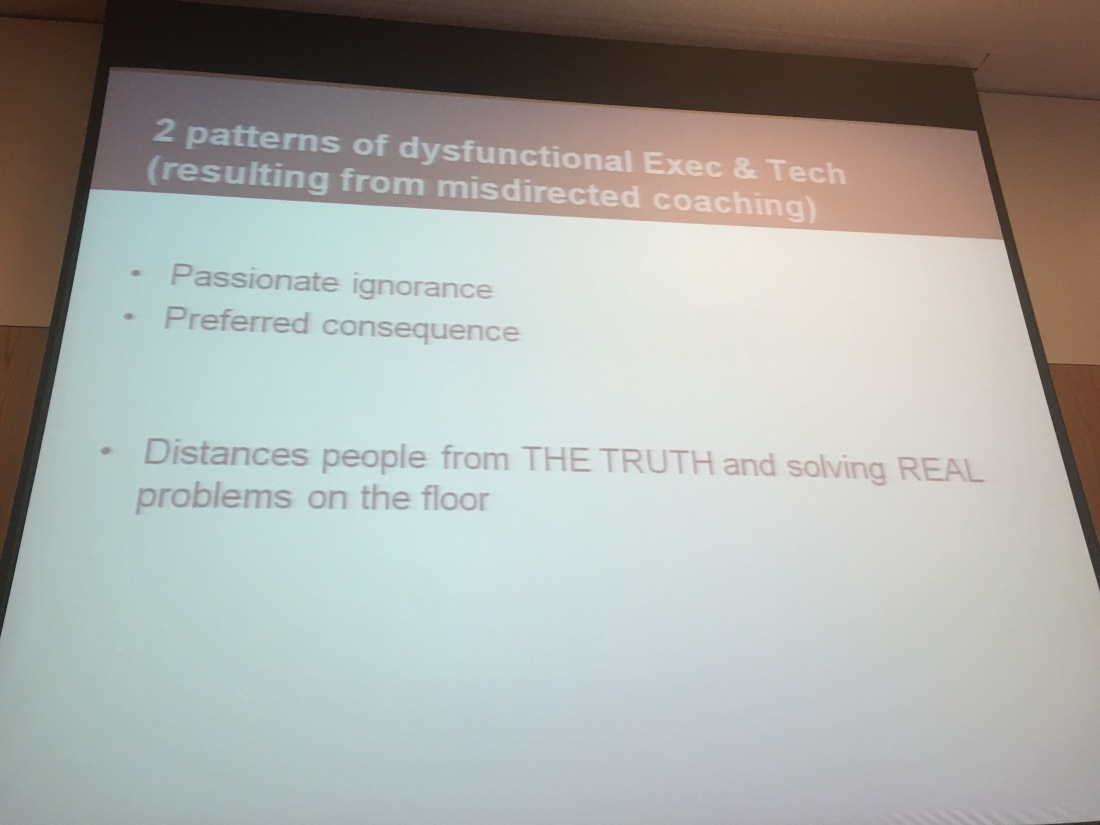One of the best talks at XP2016 was from Katherine Kirk @kkirk. If you happen to be at a conference where she is speaking make sure you attend!! Katherine was one of the most engaging and entertaining speakers I’ve seen for a long time.
Insight Facilitation
In Katherine’s talk she introduced us to the concept of Insight Facilitation. Katherine talked about the importance of enabling people to figure out their own solutions in complex adaptive situations. Often “Agile Coaching” is about Process Education. This might appear to have some early success but once the big problems happen the teams are unable to adapt to the changing world around them. Through Insight Facilitation we want to empower people to handle these situations on their own.
It isn’t easy
As Coaches we can often fall into dysfunctions which can be damaging for the people within our organisations. Katherine talked about 3 common dysfunctions:
- Comforter – “Trying to make people happy”
- Controller – “Being the person who always knows best”
- Coercer – “Leading the witness to your conclusions rather than their own”
These dysfunctions can lead to the following problems:
The Journey
Taking a Coaching approach can lead to interesting reactions from people. Katherine gave an example of an executive who joined a new company and during the early months people would come to his office asking for advice on how to solve problems, his response: “What do you think you need to do?” The simple act of asking this question was promoting empowerment of the individual and ownership.
This example made me think of a book I’ve been reading recently which is all about asking powerful questions; “The Coaching Habit: Say less , Ask More & Change the way you lead forever“. In particular the book talks about the‘AWE’ question which is incredibly powerful to help explore other possibilities. AWE = And What Else?
Katherine also shared the different reactions she has seen and the journey people take through Coaching which I thought summed it nicely:
Excellent talk and great learning points about Coaching.
Thank You Katherine!
Some of my other posts from XP2016 are here:
- XP 2016 – Dan North – Software Faster
- XP2016 – Day 1 – XP at Scale – Elisabeth Hendrickson
- How to do Example Mapping
- XP2016 – Does the Test Automation Pyramid matter and who really cares? – Panel Discussion








